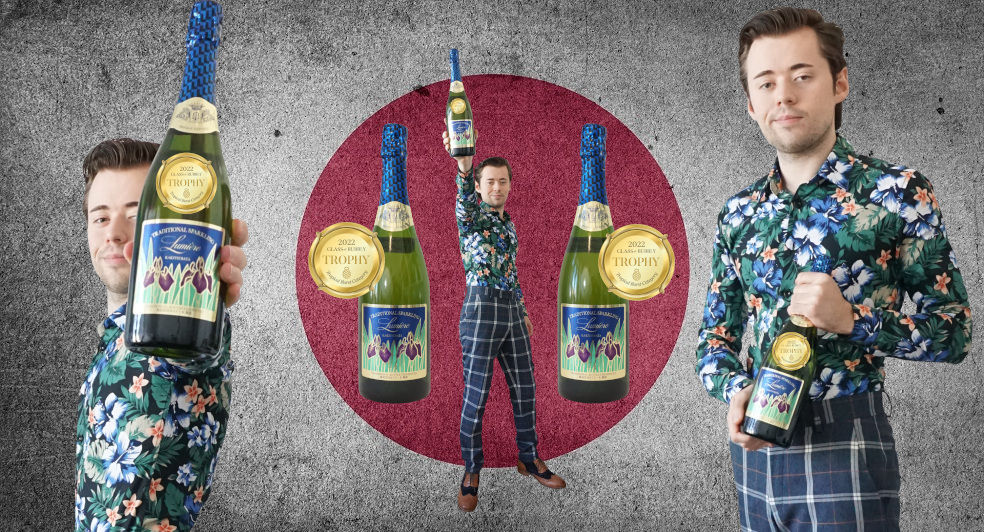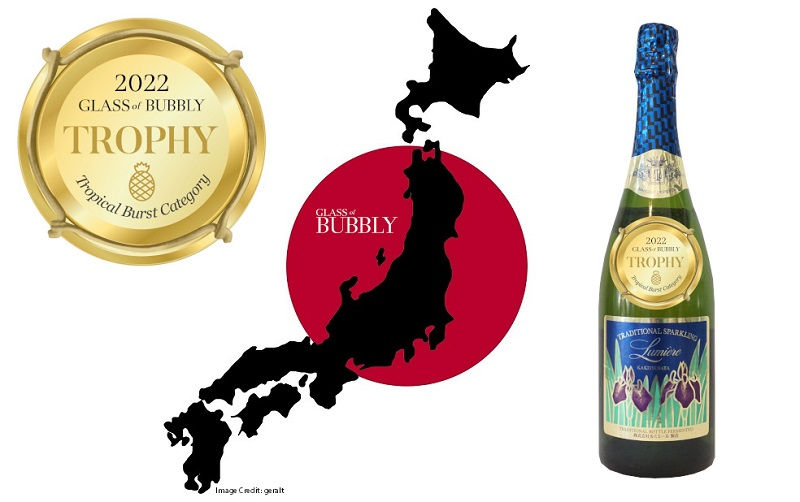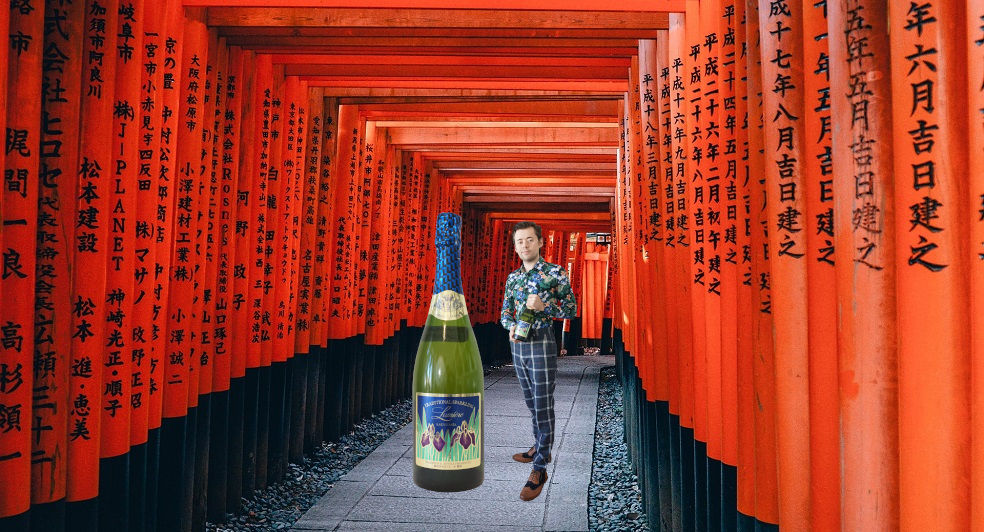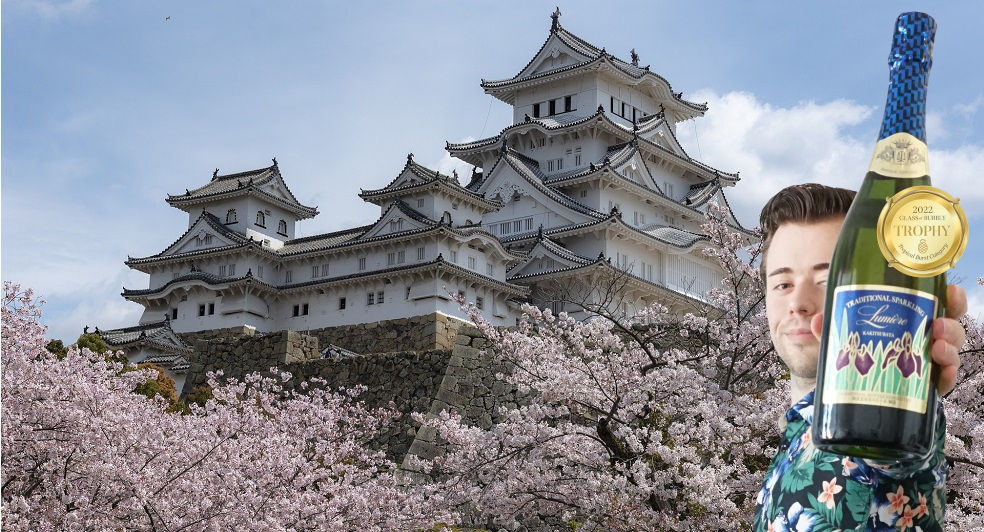The Wonders of Japan
5th July 2023

A country of immense beauty, a country that hosts some of the finest expressions of life, with honour in history and elegance in craft. Japan, amongst its many other wonders, offers incredible Sparkling Wines.
We’ll explore the country, culture and discover one Japanese Winery in particular that took home a Trophy at the Glass of Bubbly Awards 2022 for an incredible tropical flavour.
I also reached out to Lumière to get a few comments and to ask them a few questions about their Sparkling Wine and Winery in Japan, you can read the answers throughout our journey.

As far back as 718 AD the Japanese people have been growing Grapes, we just don’t exactly know when they started making Wine.
The first documented record that a Japanese drank a wine in Japan was in 16th century. When Saint Francis Xavier from Portuguese gifted it to the lord of Kyushu. It comes during the 16th century when Portuguese Jesuit Missionaries landed in Japan. The leader, Saint Francis Xavier presented gifts to the Japanese feudal lords of Kyūshū, including bottles of European Wine.
According to the latest DNA analysis of KOSHU grape by [Japan National Research Institute of Brewing], its origin was Caucasus region and had been mated with various wild berries in the central Asia before reaching in Japan in 8th century. Ref. The Story of Japan Wine No.01 (nrib.go.jp) Through the numerous challenges of winemaking since Edo era to the early Meiji era, the first winemaking in Japan was actually started from 1872 during Meiji era.
When we look at one of Japan’s famous and traditional drinks, Sake, which is Japan’s famous and traditional alcoholic drink, it is made from rice and was started manufacturing during Yayoi period (300 BC – 250 AD) then production got stable during Nara period in 8th century. The Story of Sake (nrib.go.jp) started production back during the 3rd century BC with the first written record of the word Sake coming from the 3rd century AD. We can only confirm that the manufacture of the drink started in the 8th century AD, although it’s believed to have started before.
Lumière – Japanese Sparkling Wine
Lumière is family-owned winery which has been in operation for over 138 years, being first established in 1885, they are located in Yamanashi, around 110 km west of Tokyo.
The Yamanashi Prefecture is a famous and historical wine producing region in Japan, surrounded by mountains and rivers, gifting wonderful views for those working out in the vineyards.
All of Lumière’s grapes are personally hand-picked, helping to ensure that only the finest grapes are used, sorting and gently moving them from the vine to their determined destination.
One of the grape varieties they plant are Koshu Grapes, which are pink-skinned and are one of the most popular varieties planted in Japan, their story dates back to around 1,000 years ago, with them traveling via the Silk Road from the Caucasus, across Central Asia, they then went to China and finally ended up in Japan.
“Traditional Sparkling KAKITSUBATA is made from the KOSHU grape, mainly harvested in our own vineyards just in front of the ancient garden pond with flowers. KAKITSUBATA is the flower name, which means Japanese Iris.” – Lumière

“This flower “KAKITSUBATA” has been clustered natively around the garden pond in our winery founder’s own house since a long time ago. In 1885, after he, Mr. Tokugi Furiya, was released from his duty as a samurai working for Edo government, he established a winery at his house in front of huge vineyards with his family who used to be a swordsmith. So KAKITSUBATA is a symbolic flower for our winery, very beautiful, impressive and also well-known as a traditional flower of Japan. In 2009, we had this flower on the label of our proud sparkling wine with a concept of Japanese Pop design.” – Lumière
When crafting their Sparkling Wines, they choose only the finest of their hand-picked grapes to include in their Traditional production, which spends at least 5 years more or less in aging before becoming available to purchase.
Their Winery shop provides a perfect place to stop by and browse their display of wines, sparkling wines, limited wines, liqueurs, vinegar and other goods.
Lumière are passionate about their Zelkova restaurant where they offer wonderful, freshly made fine dining cuisine, using locally grown, farm-fresh produce, with their menus always being updated with new recipes, changing every two months, meaning there is always a new reason to return for another exquisite evening out. It’s the perfect place to pair delicious food with Lumière’s collection of wines and Sparkling Wines.
With Your Zelkova Restaurant, Have You Discovered Any Fantastic Food Pairing Recommendations With Your KAKITSUBATA?
“Chef Mr. Hirota recommends; Roast Char (or Mountain Trout) with Spinach, SHIITAKE-mushroom, Roasted Pine nuts & Brown Butter Vinaigrette. Zelkova’s Chef usually provides Japanese ‘KAI Salmon’ dish to pair with KAKITSUBATA, but it’s hard to find even in Japan. Hence he is offering you to describe Char instead for your article readers to understand easier.” – Lumière

If you travel back to 1885, we’ll discover that Tokugi Furiya, a local highly respected lord and the current president’s great-great-grandfather, founded Furiya Winery. The Winery would continue with this name until 1895 when it changed to Koshu-en.
In 1901, wine tanks made from stone, called ‘Ishigura’, were built and used at the Winery. Many years later, in 1943 the company again re-organized as a joint stock company to Koshu-en Co. Ltd.
In 1918 Lumière was awarded the Japanese Imperial Warrant.
When 1976 rolled around, Toshihiko Tsukamoto became the president of Koshu-en. He set to work on improving the quality of wine greatly and in 1967 he launched Château Lumière Red & White, which was made with heart and passion and brought home many gold medals and prizes for their wines.
After the great success of Château Lumière Red & White, the company name was changed to ‘Lumière’ in 1992 to match the wine brand. The Château Lumière Red & White has now been produced.
In 2005, Shigeki Kida became the president of Lumière, he is the 5th generation to continue the legacy of Lumière. Then in 2007 Lumière started the production of its Sparkling Wines. Their winery restaurant ‘La casita’ opened in 2006. In 2010, changed the restaurant style and renewed as Zelkova, also renovated the winery shop.

In 2011 Lumière started exporting its wines to the United Kingdom.
Lumière has a strong history of taking home Gold medals for their Wines and Sparkling Wines, so it’s no surprise that their Traditional Sparkling KAKITSUBATA has taken home a Trophy at the Glass of Bubbly Awards 2022 in the category of Tropical Burst, providing a perfect display of tropical characters.
Is There A Story Behind The Traditional Sparkling KAKITSUBATA’s Unique Label Design?
“It is a sparkling wine made from the Koshu grape, made by Japanese sense, learned Western culture. So this label expresses “Japanese modern” style — fused the chic of Japan & western culture — called “Wakon-Yousai” in Japan.” – Lumiére

Tropical Burst
‘A wine which shows a touch of tropical fruit character such as pineapple, banana and mango.’
Lumière – Traditional Sparkling – KAKITSUBATA – Tasting Notes
Aroma – “Aromas of fresh banana, dried banana, banana crushed on toast, lovely fresh floral notes, like walking into a florist shop, with prominent yellow rose petals for myself, notes of dried pineapple, honeydew melon and more tropical/exotic fruits await you.”
Flavour – “The palate starts with gorgeous, soft, smooth, silky, creamy textures of fresh banana, banana on pastry, dried pineapple, Danish pastry but instead of apricot, the filling is sweet banana, notes of yellow citrus, honeydew melon and more tropical notes at the close.”
“Talk about fitting the category, this Japanese Sparkling Wine perfectly provides everything you want from a Tropical Burst Sparkling Wine, a truly worthy Trophy Winner.”
Trophy Winner for the Tropical Burst Category at the Glass of Bubbly Awards 2022
I also reached out to Jeremy Lithgow, a Master of Wine who works for Amathus Drinks, and asked him a question about Japanese Sparkling Wine.
What Is The Most Successful Outlet For You, Regarding Japanese Sparkling Wine?’
“It’s a combination of Japanese restaurants taking the opportunity to fill the sparkling category with something domestically produced rather than defaulting to Champagne or Prosecco, alongside restaurants and independent retailers just looking for high quality wines of interest, which offer the consumer a new experience.” – Jeremy Lithgow MW

The questions presented to Lumière were answered on their behalf by Yukiko Amano, their Export Manager.
Image Credit: Himeji Castle – Dinosaur – Japanese Flag – Walkway – Japan – Amazing Japan
![]()
Oliver Walkey
Champagne and Sparkling Wine Writer, Focused on Bringing the Exciting and Fascinating World of Bubbly to You.

